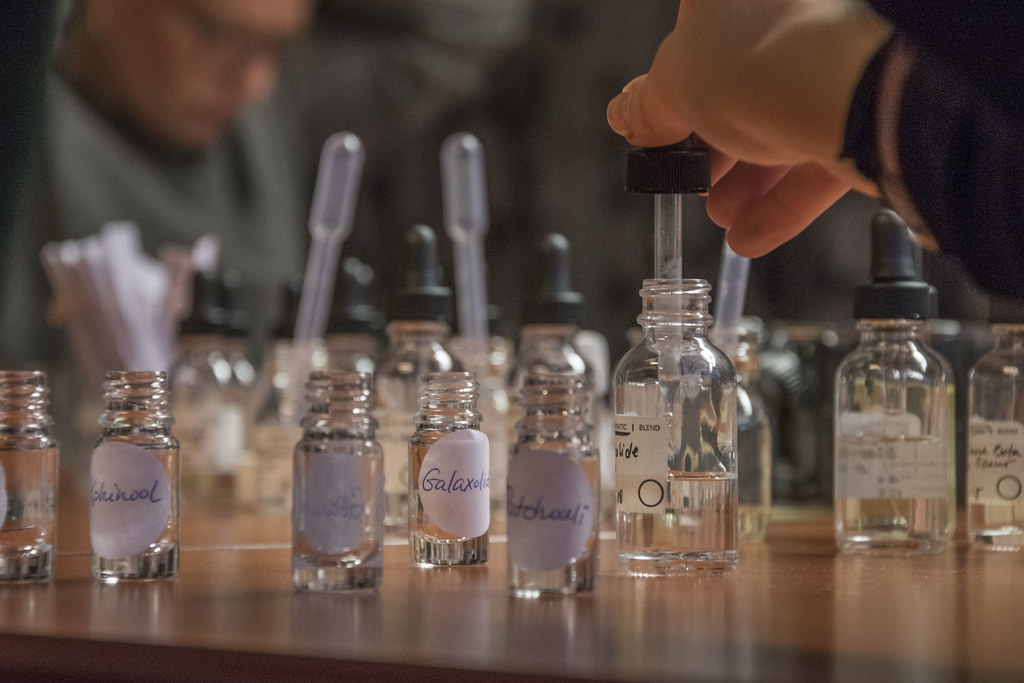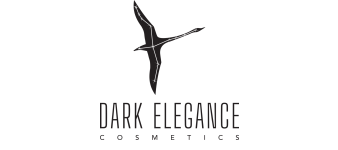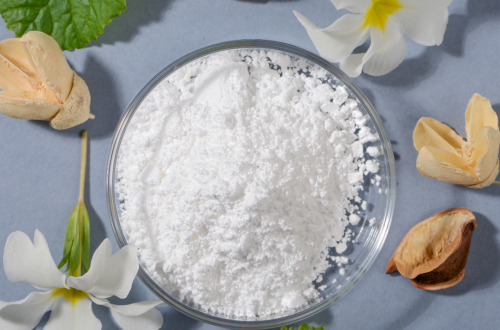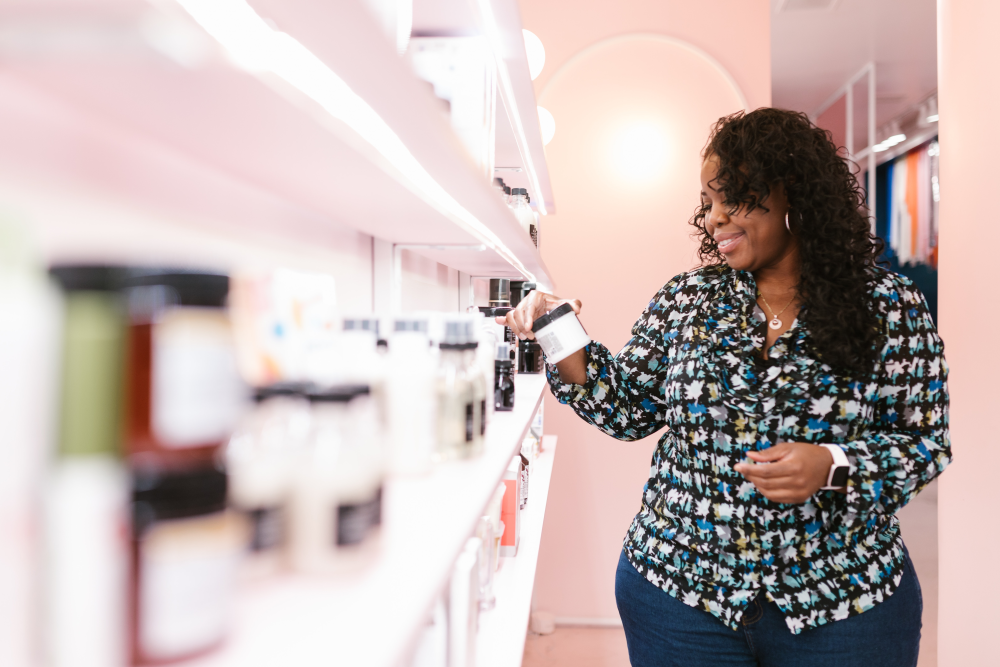
Foundation Ingredients Part II: Common Ingredients
In Part I of Foundation Ingredients, you were introduced to categories of ingredients often found in cosmetic formulations, more specifically, in foundations. Here in part II of this series, you will learn the names of some ingredients that fall under the previously discussed categories and how (or if) these cosmetic ingredients benefit your dark and/or ethnic skin.
Emollients
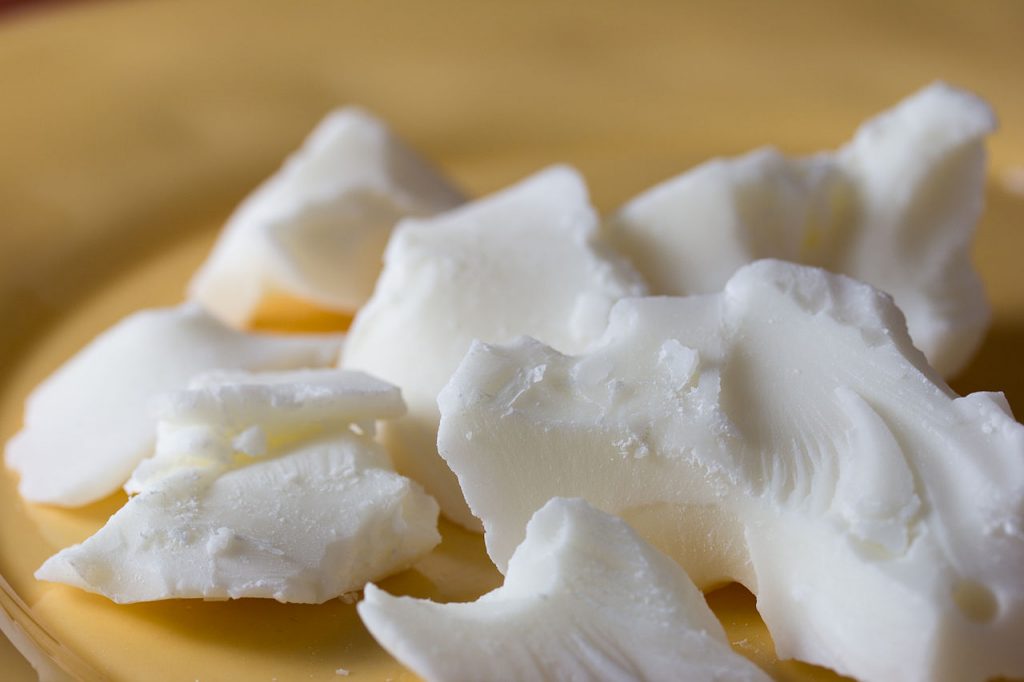
As detailed in the previous post, emollients are included into formulas to soften and condition the skin. Here are a few emollients that are commonly included in foundations:
- Isododecane is a clear and colourless liquid with a light feel. It is non-greasy and typically used in long wear formulations. This ingredient is generally considered safe for use on the skin and reactions to it are uncommon.
- Dimethicone is a silicone frequently used in many cosmetic and personal care products. This synthetic (lab created) emollient is liquid in form and varies in viscosity from water-like to thick. As Silicones have undeservingly gotten a bad rap because of the spreading of misinformation. Dimethicone, for example, is a very useful occlusive because it forms a protective barrier on the skin, helping to retain moisture. This protective, moisture retaining, barrier is formed by dimethicone sitting on top of the skin rather than it sinking in and clogging the pores. Additionally, the dimethicone layer formed on top of the skin is a breathable layer that does not suffocate the skin. There is no evidence that silicones cause breakouts or make them worse. Dimethicone gives your skin a silky and smooth finish and plumpens and fills in fine lines and wrinkles. It is an excellent moisturizer. Additionally, this silicone softens and improves the elasticity of scar tissue – this can be beneficial as scarring tends to show more prominently on dark skin and the skin of people of colour.
- Caprylic/Capric triglyceride is a very common emollient. It has a natural in origin, having been derived from coconut oil and glycerine. This emollient is light in texture, clear, odourless, and has a non-greasy feel to it. Considered to be very safe for skin, it is well tolerated by all skin types.
Emulsifiers/Surfactants
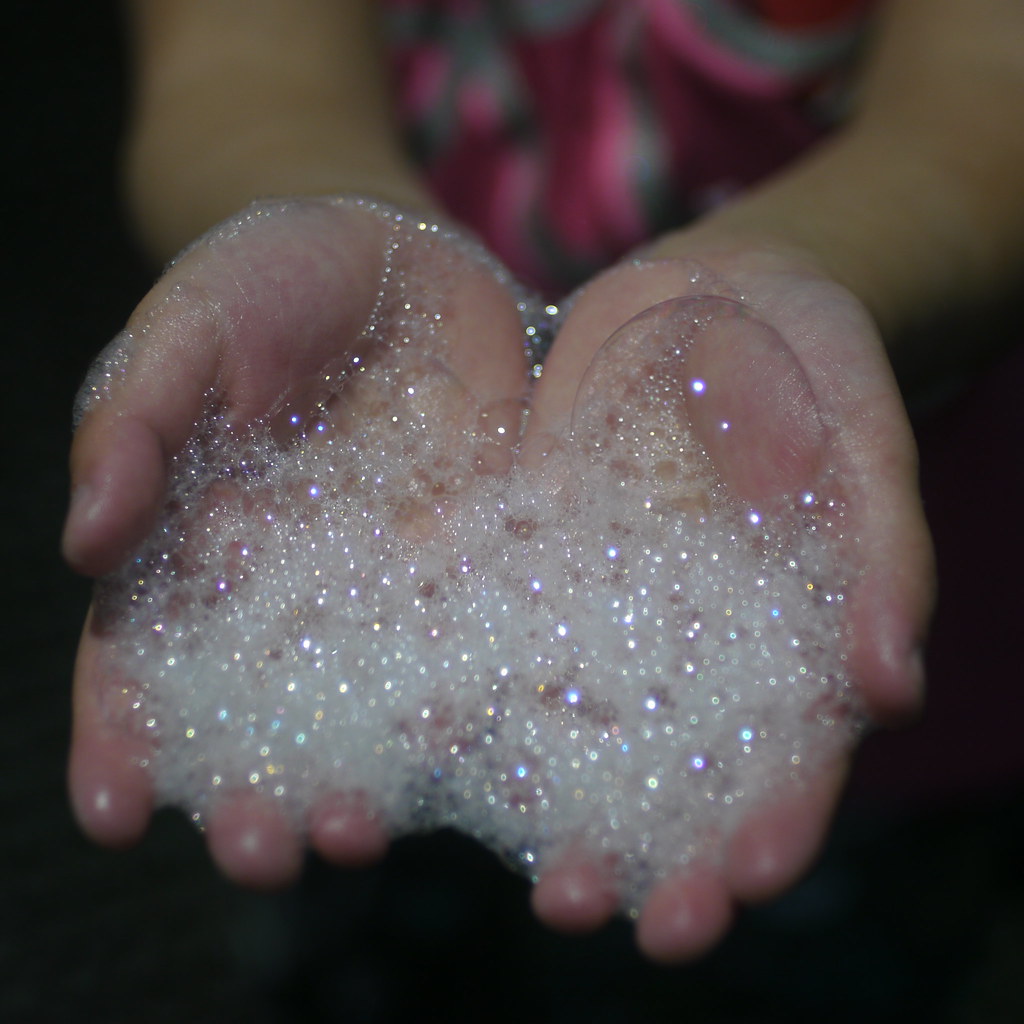
Emulsifiers and surfactants are included to help blend and stabilize immiscible compounds. Here are some examples of common surfactants/emulsifiers that are included in foundations:
- Polysorbate 20 is a widely used, gentle, cosmetic surfactant (detergent) that is liquid in form. Its primary functions are the blending of oils into water, dispersion, and stabilisation.
Preservatives
Preservatives are necessary to include in foundations, even if the formula does not contain any water. For example, while using a product, a person can introduce moisture thus creating a breeding ground for microbial growth. Most importantly, this microbial growth can be pathogenic in nature and potentially make you sick if left unchecked. Thus both water containing and anhydrous foundations and cosmetics, should contain a preservative. A good preservative will prevent mould, yeast, and bacterial growth in your foundation over months of use and exposure to potential contaminants such as your makeup brush or your fingers. Some common preservatives used in foundations are:
- Parabens are a family of preservatives that includes of number of different chemicals. Some of the common ones used in foundations and other cosmetic formulas are methylparaben, propylparaben, butylparaben, and ethylparaben. Parabens are frequently used because they have proven to be extremely effective at providing broad spectrum microbial protection (effective against yeast, mould, and bacteria). Within the past decade or so though, parabens have gotten a bad reputation due to some studies which appeared to link these chemicals to cancer, namely, breast cancer, due to their weak estrogenic effect. The conclusions of these studies have been proven false. It is important to note that many fruits and vegetables and other foods we eat on daily basis would also have an estrogenic effect if tested in a similar way. Additionally, the amount of parabens included in cosmetic formulations is far below any level that would disrupt the endocrine system. Lastly, research has found no direct link between cancer and paraben containing cosmetic and personal care products. Recent studies have repeatedly shown that parabens are simply metabolized and excreted harmlessly from the body. Therefore, you should not be afraid to purchase foundations or cosmetics that contain parabens – their presence will actually protect you, not do you harm.
- Aldehydes are a family of broad spectrum preservatives that include formaldehyde, DMDM, imadozolidinyl urea, and diazolidinyl urea. These preservatives prevent microbial growth by slowly releasing formaldehyde over time. While formaldehyde is a well known carcinogen, the amount typically contained within cosmetic products is far below any level that would cause serious harm. But it is important to note that those with sensitive skin may experience irritation even at these low concentrations.
- The glycol ethers family includes phenoxyethanol and caprylyl glycol. Phenoxyethanol is a common broad spectrum preservative, effective against various bacteria but tends to have weaker activity against yeast and mould. It has a sticky and oily consistency and has been used for years as a preservative in cosmetics. It has a rosy odor and like the parabens and most other preservatives, is only used at a small percentage. It typically makes up no more than 1% of the formula and at this level, it is harmless in your foundation. Keep in mind though, if you are using more than one product that contains this particular preservative an accumulative effect might be observed, but this is rare. Caprylyl glycol is a colourless liquid with a scent that is slightly sweet. It acts as a humectant, it improves the feel of products, and also acts as a preservative. Additionally, it boosts the antimicrobial activity of other preservatives that are present. Typically, Caprylyl glycol does not cause irritation at the percentages found in cosmetic formulation, but if the concentration is too high, it can.
- Isothiazolinones are often listed as methylisothiazolinone on the label of products, these are powerful broad spectrum preservatives. Unfortunately, this preservative has been strongly linked to dermatitis and allergies. In Europe, this has resulted in banning the use of this preservative in all leave on products and allowing only a very low concentration in rinse off products. It is probably best to avoid this preservative in all products that will come into contact with your skin.
- The organic acids family of preservatives includes benzoic acid, sorbic acid, levulinic acid, and anisic acid. Organic acids are considered a more “natural” preservation system. Many of the organic acids are also compliant with the Cosmos Natural certification. Before being used in cosmetics, for many years organic acids were used as food preservatives. Because of this, they are generally accepted as being safe thus there are few restrictions on them. Benzoic acid mainly acts as an anti-fungal as it is less effective against bacteria. Sorbic acid, on the other hand, is most effective against yeast and mould. Anisic acid is mainly effective against mould. Levulinic acid originates from corn and is a mild preservative that has good anti-bacterial activity.
Actives

These are additional ingredients that might be included to help give your skin some extra nurturing and protection or even address a specific skin issue.
- Ostisalate is an ingredient that is commonly used in cosmetics, sunscreens, and skincare products that have SPF. This is a chemical sunscreen that only filters out the UVB rays, so it is often used in combination with other sunscreen ingredients that filter out UVA rays. Ostisalate is considered to be safe and there is no evidence that it gets absorbed into the bloodstream and causes any disruption to the endocrine system. Contrary to what you may have heard, having a foundation that includes a sunscreen is extremely beneficial for those with dark and darker skin tones. Although your skin has more protection against the sun’s rays as a person of colour, your skin can still suffer from sun damage over time and so you should take care to protect it.
- Octocrylene is another ingredient that is a chemical sunscreen. It protects against both UVA and UVB rays. Additionally, octocrylene protects the skin from environmental elements and helps prevent sun spots and wrinkles. Most people do not have a reaction to this ingredient but those with sensitive skin should probably avoid it.
- Zinc oxide is a white and powdery mineral that is a common ingredient in mineral makeup. While Zinc oxide is often used as a colourant in makeup, it can also act as a physical sunscreen as it blocks both UVB and UVA rays. Therefore, it prevents sunburn, premature skin aging, and skin damage. Zinc oxide is also used to treat a number of different skin conditions as it has been found to have anti-inflammatory, anti-oxidative, anti-microbial, anti-acne, and cleansing properties. Zinc oxide is considered safe and well tolerated by the skin even in relatively high amounts.
- Titanium dioxide is a white powdery mineral naturally found in the earth’s crust. Like zinc oxide, titanium dioxide is often used as a colourant in foundation makeup. Titanium dioxide manufactured at the nanoscale particle size (a smaller particle size than the one used for pigment) blocks UV light, so is typically used used in conjunction with another ingredient as a sunscreen.
- Vitamin E is a critical fat soluble antioxidant that is an often used in cosmetic products. It may also help prevent UV damage of the skin. Because it is an antioxidant, it protects your skin against damage from free radicals as well.
- Hyaluronic acid (HA) is a polysaccharides, or more simply put, a sugar, naturally found throughout the body’s connective tissue. HA gives your skin its structure and is the the major reason for that plump, hydrated look. Therefore, products that contain this can be beneficial to our skin. Considering the critical role that HA plays in maintaining the structure of our skin, it should come as no surprise that HA is anti-aging, extremely hydrating, wound-healing, anti-wrinkle, increases skin elasticity, and can treat eczema and skin irritation. Therefore, HA would definitely be a good ingredient to have for your dark skin and/or ethnic skin.
Pigments
Pigments are added to varying amounts to give foundations their colours. The types of pigments used are typically compounds called iron oxides. These compounds form naturally in nature and come in a variety of earthy tones of browns, yellows, oranges, reds, and black. But because iron oxides found in nature typically are contaminated with heavy metals such as mercury, arsenic and cadmium, the iron oxides used in cosmetics are synthetically produced and purified. The three main colour combinations used in foundations are black, yellow and red. These iron oxides are usually combined with zinc oxide and/or titanium dioxide to achieve various tones or shades of foundations at whatever coverage level desired. Cosmetic grade iron oxides do not irritate the skin.
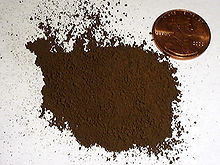
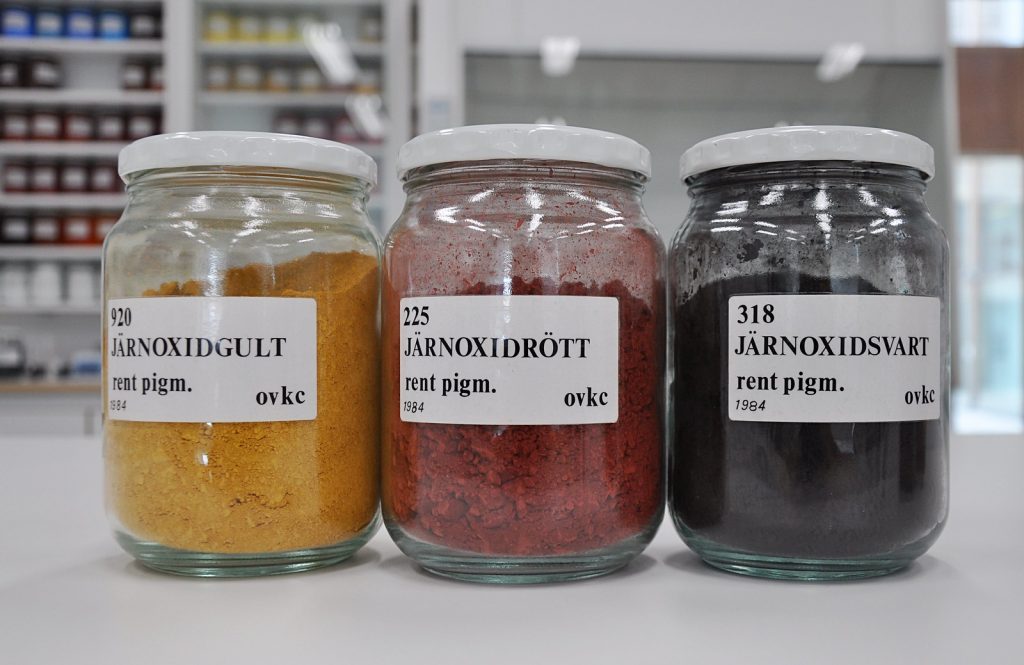
Fragrance
This is added to give foundations their signature scent and to make them more pleasing. The particular blend a cosmetic company adds is oftentimes a trade secret. The fragrance is added in a very trace amount, so it is extremely unlikely to cause any skin irritation.
